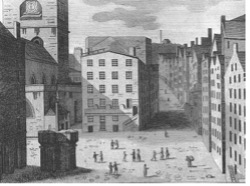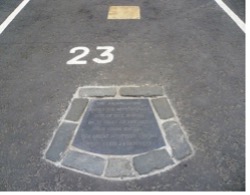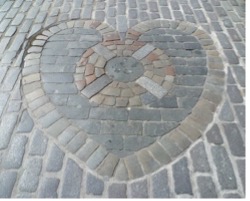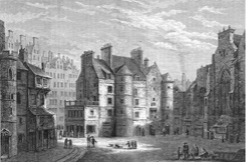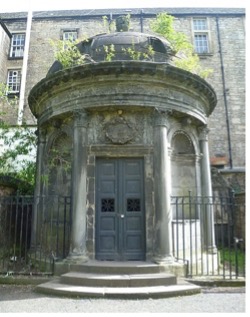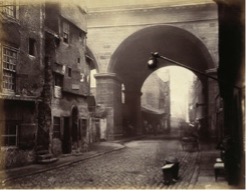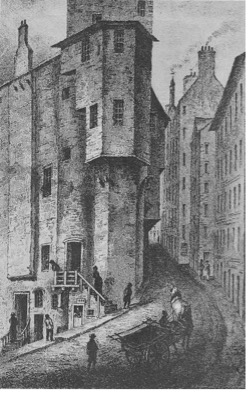329 High Street, Edinburgh, EH1 1SG
Euphemia MacCalzean (pronounced ‘Macall-yon’) owned property on Edinburgh’s High Street and was a victim of the so-called North Berwick witchcraft panic of 1590–92. She inherited wealth from her father, Thomas MacCalzean of Cliftonhall, and from her father-in-law, John Moscrop, both leading Edinburgh lawyers. But Moscrop had two children – not only Patrick Moscrop, married to Euphemia MacCalzean, but also Katherine Moscrop, married to David Seton, bailie of Tranent – and Katherine’s inheritance was much smaller than Patrick’s. David Seton probably resented this. And it was David Seton who initiated the entire witchcraft panic in 1590 by interrogating and torturing his maidservant Geillis Duncan. Duncan in her confession named various names of fellow-witches – including Euphemia MacCalzean. Presumably it was Seton who suggested this name to her.

Edinburgh High Street
©J.M.W. Turner,
Wikimedia Commons
MacCalzean was found guilty, and executed on 25 June 1591 at Castlehill, now the Esplanade. The king granted her estate of Cliftonhall to his favourite Sir James Sandilands of Slamannan, while her house on the High Street was granted to John Shaw, an officer in the royal stables. However, MacCalzean’s execution seems to have been unpopular, and the prosecutions stalled. When the original suspect, Geillis Duncan, was eventually led out to execution on 4 December 1591, she made a public declaration that her confession against Euphemia MacCalzean and other witches had been false. MacCalzean’s husband was among those who witnessed this declaration.

Woodcut depicting accused witches kneeling before King James
©Wikimedia Commons
Sources:
- Survey of Scottish Witchcraft, Julian Goodare, Lauren Martin, Joyce Miller and Louise Yeoman, January 2003.
- Wikipedia: Euphame MacCalzean
- Internet Archive


